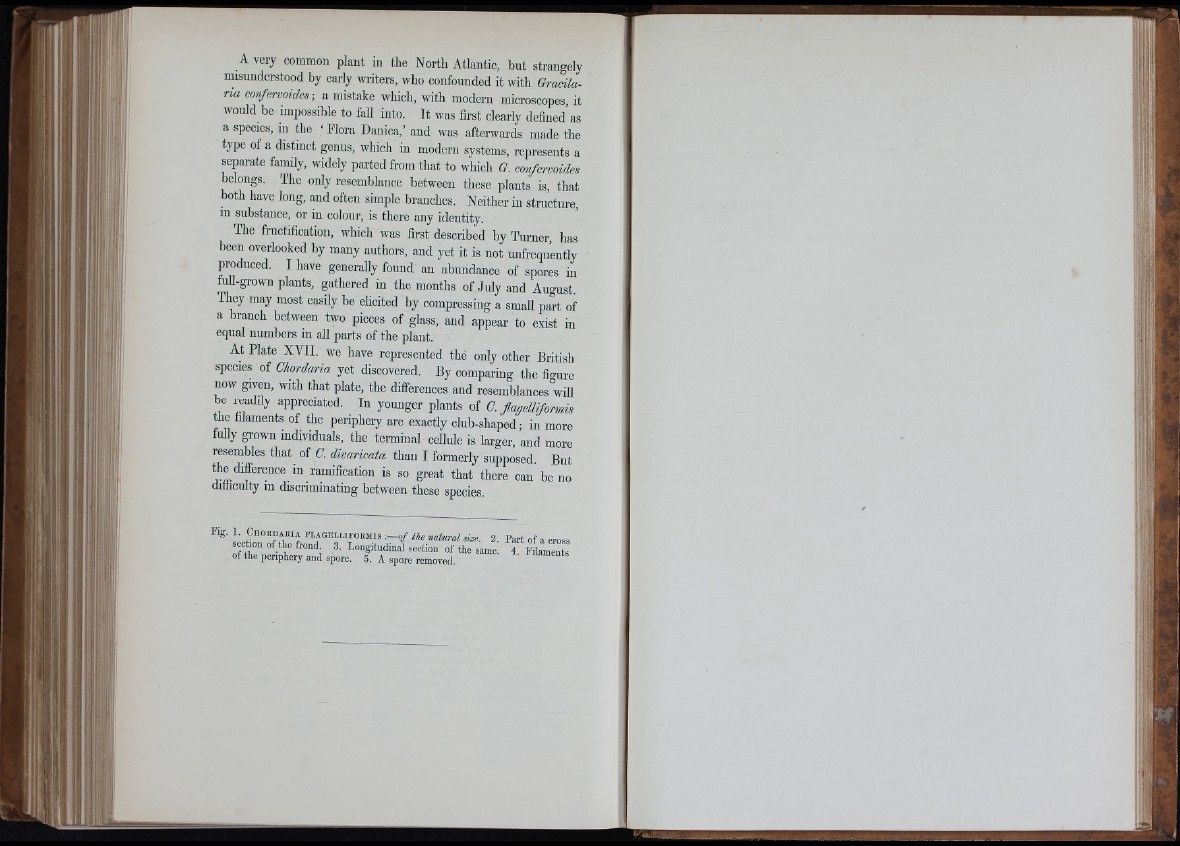
i
A very common plant in the North Atlantic, but strangely
misunderstood by early writers, who confounded it with Gmcila-
na confervoides; a mistake which, with modern microscopes it
would be impossible to fall into. It was first clearly defined’as
a species, m the ‘Flora Danica,’ and was afterwards made the
type of a distinct genus, which in modern systems, represents a
separate family, widely parted from that to which G. confervoides
belongs. The only resemblance between these plants is, that
both have long, and often simple branches. Neither in structure,
in substance, or in colour, is there any identity.
The fructification, which was first described by Turner, has
been overlooked by many authors, and yet it is not unfrequently
produced. I have generally found an abundance of spores in
full-grown plants, gathered in the months of July and August.
They may most easily be elicited by compressing a small part of
a branch between two pieces of glass, and appear to exist in
equal numbers m all parts of the plant.
At Plate XVII. we have represented the only other Pritish
species of Chordaria yet discovered. Py comparing the figure
now given, with that plate, the diiferences and resemblances will
be readily appreciated. In younger plants of C. fagelliformis
the filaments of the periphery are exactly club-shaped; in more
tully grown individuals, the terminal cellule is larger, and more
resembles that of C. divaricata than I formerly supposed Put
the difference in ramification is so great that there can be no
difficulty in discrimmating between these species.
Kg. 1. Chordama flagellifoemis -.— o f tU natural size. 2. Part of a eros,
section of the frond. 3. Longitudinal section of the same. 4 Filaments
of the periphery and spore. 5. A spore removed, filaments
liT'’
I U